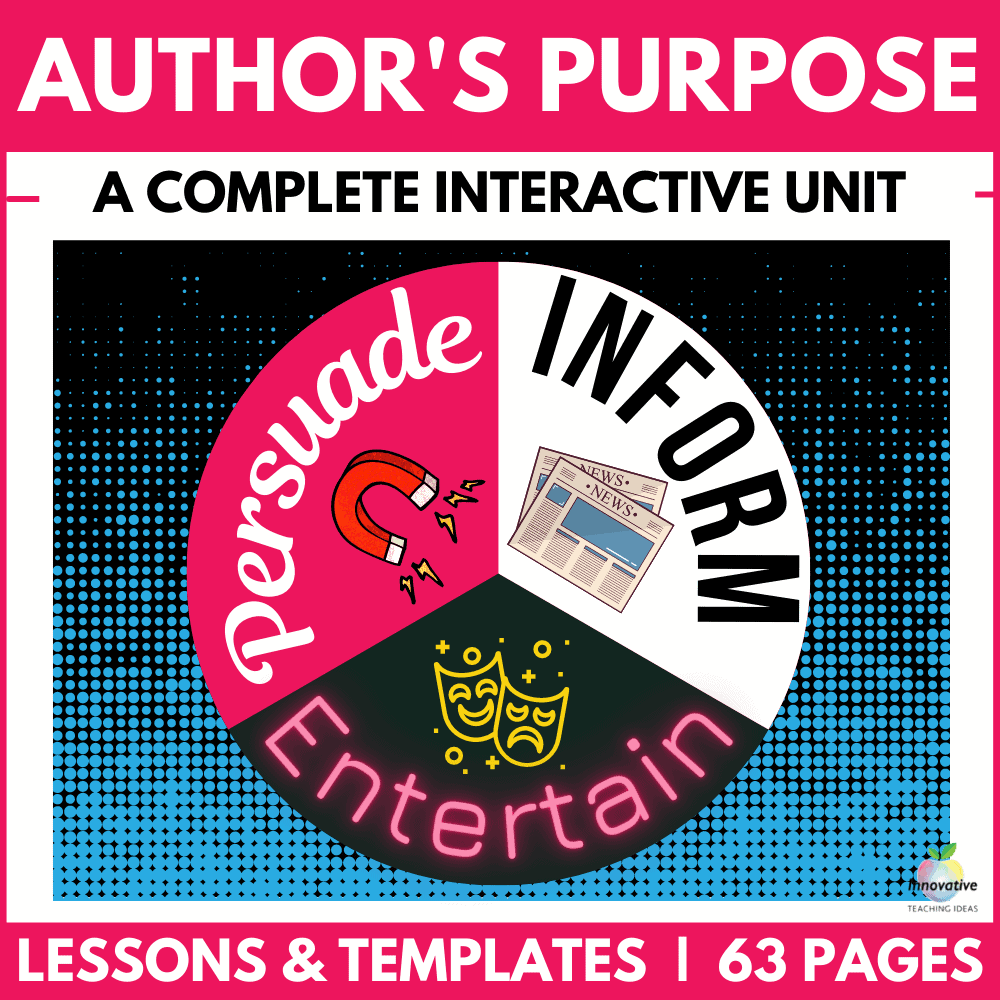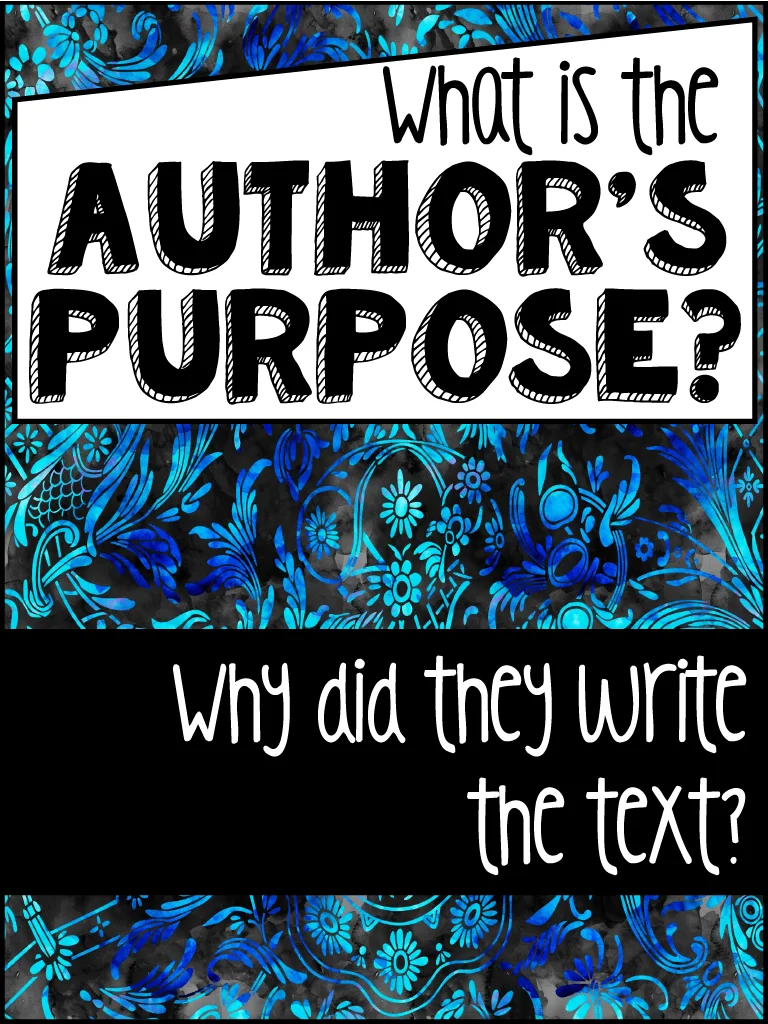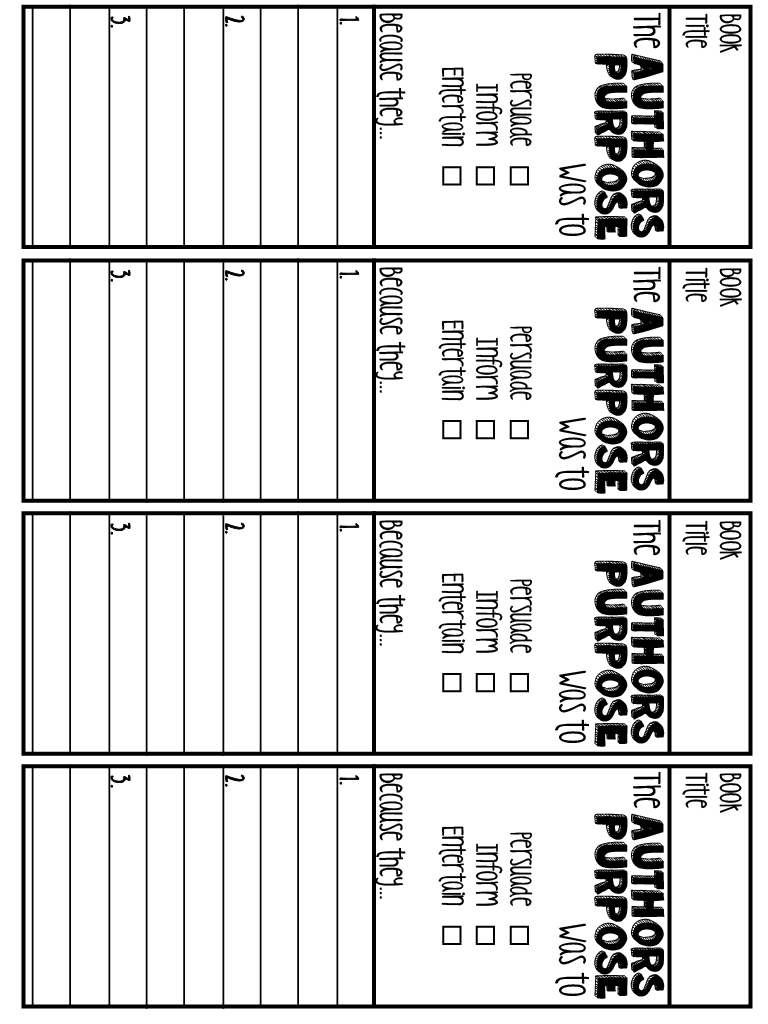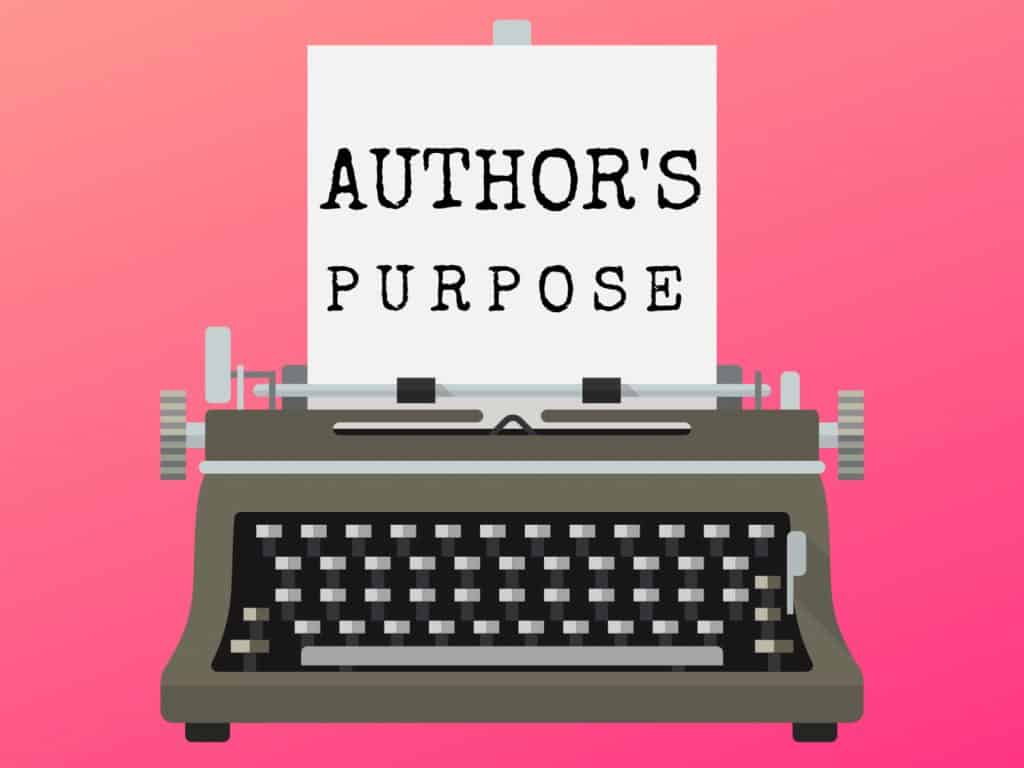
What Is The Author’s Purpose?
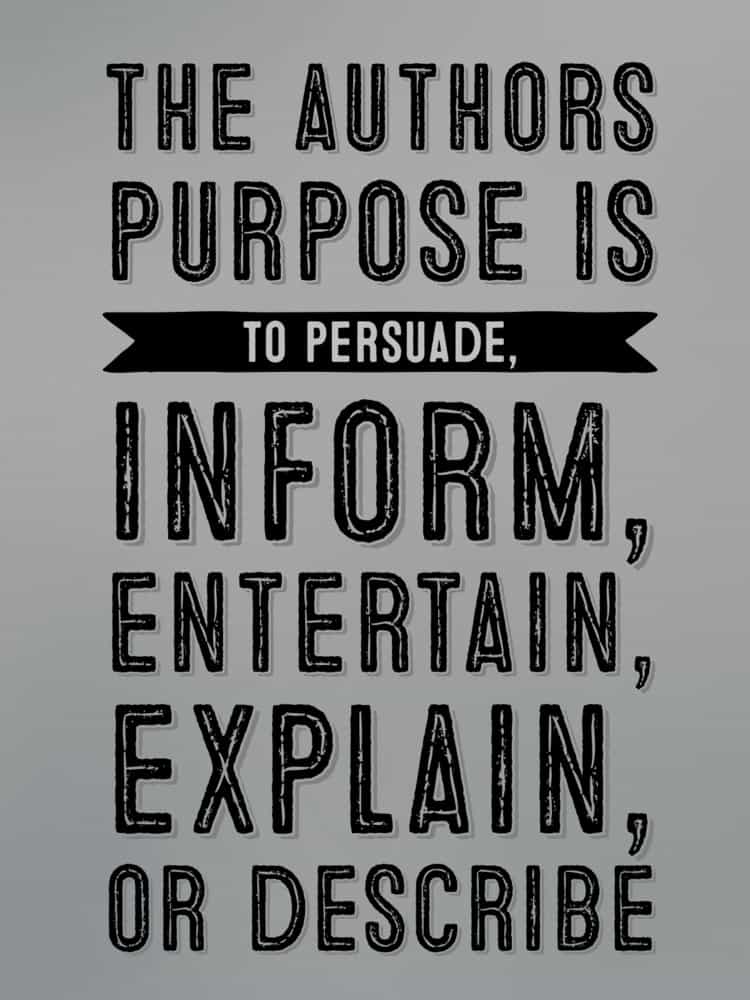
When discussing the author’s purpose, we refer to the ‘why’ behind their writing. What motivated the author to produce their work? What is their intent, and what do they hope to achieve?
The author’s purpose is the reason they decided to write about something in the first place.
There are many reasons a writer puts pen to paper, and students must possess the necessary tools to identify these reasons and intents to react and respond appropriately.
Understanding why authors write is essential for students to navigate the complex landscape of texts effectively. The concept of author’s purpose encompasses the motivations behind a writer’s choice of words, style, and structure. By teaching students to discern these purposes, educators empower them to engage critically with various forms of literature and non-fiction.
Author’s Purpose Definition
The author’s purpose is his or her motivation for writing a text and their intent to Persuade, Inform, Entertain, Explain or Describe something to an audience.
Author’s Purpose Examples and Types
It is universally accepted there are three base categories of the Author’s Purpose: To Persuade, To Inform, and To Entertain. These can easily be remembered with the PIE acronym and should be the starting point on this topic. However, you may also encounter other subcategories depending on who you ask.
This table provides many author’s purpose examples, and we will cover the first five in detail in this article.
| Author’s Purpose | Author’s Purpose Examples |
|---|---|
| To Persuade: | The author aims to convince the reader to agree with a particular viewpoint or take a specific action. This can be seen in opinion pieces, advertisements, or political speeches. |
| To Inform: | The author aims to provide factual information to the reader, such as in textbooks, news articles, or research papers. |
| To Entertain: | The author aims to engage and amuse the reader through storytelling, humour, or other means. This includes genres such as fiction, poetry, and humour. |
| To Explain: | The author’s purpose is to provide step-by-step guidance or directions to the reader. Examples include manuals, how-to guides, and recipes. |
| To Describe: | The author uses vivid language to paint a picture in the reader’s mind. This can be found in travel writing, descriptive essays, or literature. |
| To Express: | Some authors write primarily to express themselves, their thoughts, emotions, or experiences. This can be seen in personal essays, journals, or poetry. |
| To Explore: | Exploratory writing involves delving into a topic or idea to gain a deeper understanding or to provoke thought. This can be found in philosophical essays, literary analysis, or investigative journalism. |
| To Document: | Authors may write to document events, experiences, or historical periods for posterity. This includes memoirs, autobiographies, and historical accounts. |
Author’s Purpose 1: To Persuade
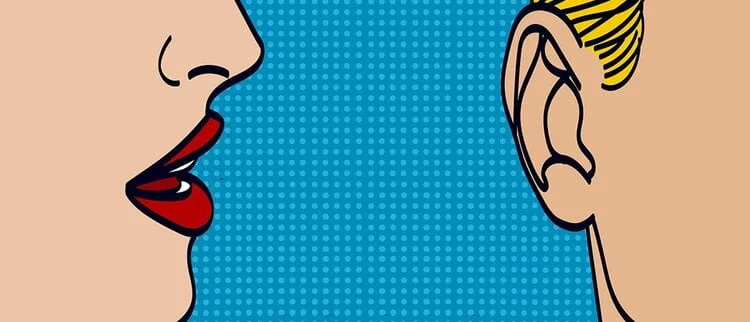
Definition: This is a prevalent purpose of writing, particularly in nonfiction. When a text is written to persuade, it aims to convince the reader of the merits of a particular point of view. In this type of writing, the author attempts to persuade the reader to agree with this point of view and/or subsequently take a particular course of action.
Examples: This purpose can be found in all kinds of writing. It can even be in fiction writing when the author has an agenda, consciously or unconsciously. However, it is most commonly the motivation behind essays, advertisements, and political writing, such as speech and propaganda.
Persuasion is commonly also found in…
- A political speech urges voters to support a particular candidate by presenting arguments for their suitability for the position, policies, and record of achievements.
- An advertisement for a new product that emphasizes its unique features and benefits over competing products, attempting to convince consumers to choose it over alternatives.
- A letter to the editor of a newspaper expressing a strong opinion on a controversial issue and attempting to persuade others to adopt a similar position by presenting compelling evidence and arguments.
How to Identify: To identify when the author’s purpose is to persuade, students should ask themselves if they feel the writer is trying to get them to believe something or take a specific action. They should learn to identify the various tactics and strategies used in persuasive writing, such as repetition, multiple types of supporting evidence, hyperbole, attacking opposing viewpoints, forceful phrases, emotive imagery, and photographs.
We have a complete persuasive writing guide if you want to learn more.
Strategies for being a more PERSUASIVE writer
To become a persuasive writer, students can employ several strategies to convey their arguments and influence their readers effectively. Here are five strategies for persuasive writing:
- Understand Your Audience: Know your target audience and tailor your persuasive arguments to appeal to their interests, values, and beliefs. Consider their potential objections and address them in your writing. Understanding your audience helps you create a more compelling and persuasive piece.
- Use Strong Evidence and Examples: Support your claims with credible evidence, statistics, and real-life examples. Persuasive writing relies on logic and facts to support your arguments. Conduct research to find reliable sources that strengthen your case and make your writing more convincing.
- Craft a Persuasive Structure: Organize your writing clearly and persuasively. Start with a compelling introduction that grabs the reader’s attention and states your main argument. Use body paragraphs to present evidence and supporting points logically. Finish with a strong conclusion that reinforces your main message and calls the reader to take action or adopt your viewpoint.
- Appeal to Emotions: Persuasive writing is not just about logic; emotions are crucial in influencing readers. Use emotional appeals to connect with your audience and evoke empathy, sympathy, or excitement. Be careful not to manipulate emotions but use them to reinforce your argument authentically.
- Anticipate Counterarguments: Acknowledge and address potential counterarguments to show that you have considered different perspectives. By addressing opposing viewpoints, you demonstrate that you have thoroughly thought about the issue and strengthen your credibility as a persuasive writer.
Bonus Tip: Use Persuasive Language: Pay attention to your choice of words and language. Use compelling language that evokes a sense of urgency or importance. Employ rhetorical devices, such as repetition, analogy, and rhetorical questions, to make your writing more persuasive and memorable.
Please encourage students to practice these strategies in their writing in formal essays and everyday persuasive situations. By mastering persuasive writing techniques, students can effectively advocate for their ideas, inspire change, and have a greater impact with their words.
Author’s Purpose 2: To Inform

Definition: When an author aims to inform, they usually wish to enlighten their readership about a real-world topic. Often, they will do this by providing lots of facts. Informational texts impart information to the reader to educate them on a given topic.
Examples: Many types of school books are written with the express purpose of informing the reader, such as encyclopedias, recipe books, newspapers and informative texts…
- A news article reporting on a recent event or development provides factual details about what happened, who was involved, and where and when it occurred.
- A scientific journal article describes a research study’s findings, explaining the methodology, results, and implications for further analysis or practical application.
- A travel guidebook that provides detailed information about a particular destination, including its history, culture, attractions, accommodation options, and practical advice for visitors.
How to Identify: In the process of informing the reader, the author will use facts, which is one surefire way to spot the intent to inform.
However, when the author’s purpose is persuasion, they will also likely provide the reader with some facts to convince them of the merits of their particular case. The main difference between the two ways facts are employed is that when the intention is to inform, facts are presented only to teach the reader. When the author aims to persuade, they commonly mask their opinions amid the facts.
Students must become adept at recognizing ‘hidden’ opinions through practice. Teach your students to beware of persuasion masquerading as information!
Please read our complete guide to learn more about writing an information report.
Strategies for being a more INFORMATIVE writer
To become an informative writer, students can employ several strategies to effectively convey information and knowledge clearly and engagingly. Here are five strategies for informative writing:
- Conduct Thorough Research: Before writing, gather information from credible sources such as books, academic journals, reputable websites, and expert interviews. Use reliable data and evidence to support your points. Ensuring the accuracy and reliability of your information is essential in informative writing.
- Organize Information Logically: Structure your writing clearly and logically. Use headings, subheadings, and bullet points to organize information into easily digestible chunks. A well-structured piece helps readers understand complex topics more quickly.
- Use Clear and Concise Language: Aim for clarity and avoid unnecessary jargon or complex language that might confuse your readers. Use simple and concise sentences to deliver information effectively. Make sure to define any technical terms or concepts unfamiliar to your audience.
- Provide Real-Life Examples: Illustrate your points with real-life examples, case studies, or anecdotes. Concrete examples make abstract concepts more understandable and relatable. They also help to keep the reader engaged throughout the piece.
- Incorporate Visual Aids: Whenever possible, use visual aids such as charts, graphs, diagrams, and images to complement your text. Visual elements enhance understanding and retention of information. Be sure to explain the significance of each visual aid in your writing.
Bonus Tip: Practice Summarization: After completing informative writing, practice summarizing the main points. Being able to summarize your work concisely reinforces your understanding of the topic and helps you identify any gaps in your information.
Encourage students to practice these strategies in various writing tasks, such as research papers, reports, and explanatory essays. By mastering informative writing techniques, students can effectively educate their readers, share knowledge, and contribute meaningfully to their academic and professional pursuits.
Author’s Purpose 3: To Entertain
Definition: When an author’s chief purpose is to entertain the reader, they will endeavour to keep things as interesting as possible. Things happen in books written to entertain, whether in an action-packed plot, inventive characterizations, or sharp dialogue.

Examples: Not surprisingly, much fiction is written to entertain, especially genre fiction. For example, we find entertaining examples in science fiction, romance, and fantasy.
Here are some more entertaining texts to consider.
- A novel that tells a compelling story engages the reader’s emotions and imagination through vivid characters, evocative settings, and unexpected twists and turns.
- A comedy television script that uses humour and wit to amuse the audience, often by poking fun at everyday situations or societal norms.
- A stand-up comedy routine that relies on the comedian’s storytelling ability and comedic timing to entertain the audience, often by commenting on current events or personal experiences.
How to Identify: When writers attempt to entertain or amuse the reader, they use various techniques to engage their attention. They may employ cliffhangers at the end of a chapter, for example. They may weave humour into their story or even have characters tell jokes. In the case of a thriller, an action-packed scene may follow an action-packed scene as the drama builds to a crescendo. Think of the melodrama of a soap opera here rather than the subtle touch of an arthouse masterpiece.
Strategies for being a more ENTERTAINING writer
To become an entertaining writer, students can use several strategies to captivate their readers and keep them engaged. Here are five effective techniques:
- Use Humor: Inject humour to tickle the reader’s funny bone. Incorporate witty remarks, funny anecdotes, or clever wordplay. Humour lightens the tone of your writing and makes it enjoyable to read. However, be mindful of your audience and ensure your humour is appropriate and relevant to the topic.
- Create Engaging Characters: Whether you’re writing a story, essay, or any other type of content, develop compelling and relatable characters. Readers love connecting with well-developed characters with distinct personalities, flaws, and strengths. Use descriptive language to bring them to life and make them memorable.
- Craft Intriguing Beginnings: Grab your reader’s attention from the very first sentence. Start with a compelling hook that sparks curiosity or creates intrigue. An exciting beginning sets the tone for the rest of the piece and encourages the reader to continue reading.
- Build Suspense and Surprise: Incorporate twists, turns, and surprises into your writing to keep readers on their toes. Building suspense creates anticipation and makes readers eager to discover what happens next. Surprise them with unexpected plot developments or revelations to keep them engaged throughout the piece.
- Use Imagery and Vivid Descriptions: Paint vivid pictures with your words to immerse readers in your writing. Use sensory language and descriptive imagery to transport them to different places, evoke emotions, and create a multisensory experience. Readers love to feel like they’re part of the story, and vivid descriptions help achieve that.
Bonus Tip: Read Widely and Analyze: To become an entertaining writer, read a variety of books, articles, and pieces from different genres and authors. Pay attention to the elements that make their writing engaging and entertaining. Analyze their use of humour, character development, suspense, and descriptions. Learning from the work of accomplished writers can inspire and improve your own writing.
By using these strategies and practising regularly, students can become more entertaining writers, captivating their audience and making their writing a joy to read. Remember, the key to entertaining writing is engaging your readers and leaving them with a positive and memorable experience.
Author’s Purpose 4: To Explain
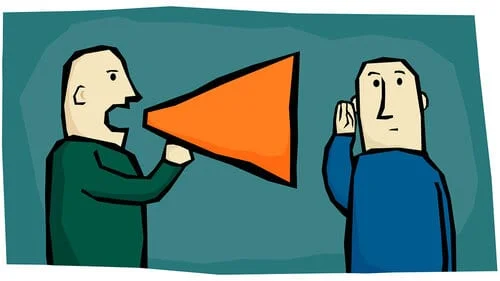
Definition: When writers write to explain, they want to tell the reader how to do something or reveal how something works. This type of writing is about communicating a method or a process.
Examples: Writing to explain can be found in instructions, step-by-step guides, procedural outlines, and recipes such as these…
- A user manual explaining how to operate a piece of machinery or a technical device provides step-by-step instructions and diagrams to help users understand the process.
- A textbook chapter that explains a complex scientific or mathematical concept breaks it into simpler components and provides examples and illustrations to aid comprehension.
- A how-to guide that explains how to complete a specific task or achieve a particular outcome, such as cooking a recipe, gardening, or home repair. It provides a list of materials, step-by-step instructions, and tips to ensure success.
How to Identify: Often, this writing is organized into bulleted or numbered points. As it focuses on telling the reader how to do something, often lots of imperatives will be used within the writing. Diagrams and illustrations are often used to reinforce the text explanations too.
Read our complete guide to explanatory texts here.
Strategies for being a more EXPLANATORY WRITER
To become a more explanatory writer, students can employ several strategies to effectively clarify complex ideas and concepts for their readers. Here are five strategies for explanatory writing:
- Define Technical Terms: When writing about a specialized or technical topic, ensure that you define any relevant terms or jargon that might be unfamiliar to your readers. A clear and concise definition helps readers grasp the meaning of these terms and facilitates better understanding of the content.
- Use Analogies and Comparisons: Use analogies and comparisons to relate complex ideas to more familiar concepts. This technique makes abstract or difficult concepts more relatable and easier to understand. Analogies provide a frame of reference that helps readers connect new information to something they already know.
- Provide Step-by-Step Explanations: Break down complex processes or procedures into step-by-step explanations. This approach helps readers follow the sequence of events or actions and understand the logic behind each step. Use numbered lists or bullet points to make the process visually clear.
- Include Visuals and Diagrams: Supplement your explanatory writing with visual aids such as diagrams, flowcharts, or illustrations. Visuals can enhance understanding and retention of information by visually representing the concepts being discussed.
- Address “Why” and “How”: In explanatory writing, go beyond simply stating “what” happened or what a concept is. Focus on explaining “why” something occurs and “how” it works. Providing the underlying reasons and mechanisms helps readers better understand the subject matter.
Bonus Tip: Review and Revise: After completing your explanatory writing, review your work and assess whether the explanations are clear and comprehensive. Consider seeking feedback from peers or teachers to identify areas needing further clarification or expansion.
Please encourage students to practice these strategies in writing across different subjects and topics. By mastering explanatory writing techniques, students can effectively communicate complex ideas, promote better understanding, and excel academically and professionally.
Author’s Purpose 5: To Describe
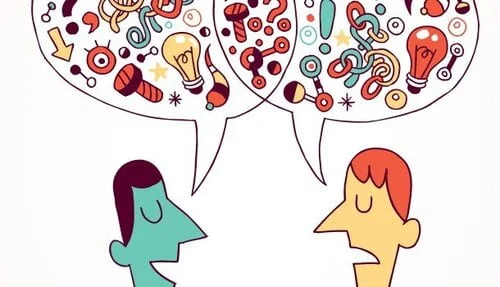
Definition: Writers often use words to describe something in more detail than conveyed in a photograph alone. After all, they say a picture paints a thousand words, and text can help get us beyond the one-dimensional appearance of things.
Examples: We can find lots of descriptive writing in obvious places like short stories, novels and other forms of fiction where the writer wishes to paint a picture in the reader’s imagination. We can also find lots of writing with the purpose of description in nonfiction too – in product descriptions, descriptive essays or these text types…
- A travelogue that describes a particular place, highlighting its natural beauty, cultural attractions, and unique characteristics. The author uses sensory language to create a vivid mental picture in the reader’s mind.
- A painting analysis that describes the colors, shapes, textures, and overall impression of a particular artwork. The author uses descriptive language to evoke the emotions and ideas conveyed by the painting.
- A product review that describes the features, benefits, and drawbacks of a particular item. The author uses descriptive language to give the reader a clear sense of the product and whether it might suit their needs.
How to Identify: In the case of fiction writing which describes, the reader will notice the writer using lots of sensory details in the text. Our senses are how we perceive the world, and to describe their imaginary world, writers will draw heavily on language that appeals to these senses. In both fiction and nonfiction, readers will notice that the writer relies heavily on adjectives.
Strategies for being a more descriptive writer
Becoming a descriptive writer is a valuable skill that allows students to paint vivid pictures with words and immerse readers in their stories. Here are five strategies for students to enhance their descriptive writing:
- Sensory Language: Engage the reader’s senses by incorporating sensory language into your writing. Use descriptive adjectives, adverbs, and strong verbs to create a sensory experience for your audience. For example, instead of saying “the flower was pretty,” describe it as “the delicate, fragrant blossom with hues of vibrant pink and a velvety texture.”
- Show, Don’t Tell: Use the “show, don’t tell” technique to make your writing more descriptive and immersive. Rather than stating emotions or characteristics directly, use descriptive details and actions to show them. For instance, instead of saying “she was scared,” describe how “her heart raced, and her hands trembled as she peeked around the dark corner.”
- Use Metaphors and Similes: Integrate metaphors and similes to add depth and creativity to your descriptions. Compare two unrelated things to create a powerful visual image. For example, “the sun dipped below the horizon like a golden coin slipping into a piggy bank.”
- Focus on Setting: Pay attention to the setting of your story or narrative. Describe the environment, atmosphere, and surroundings in detail. Take the reader on a journey by clearly depicting the location. Let your words bring the setting to life, whether it’s a lush forest, a bustling city street, or a mystical castle.
- Practice Observation: Practice keen observation skills in your daily life. Take note of the world around you—the sights, sounds, smells, tastes, and textures. Observe people, places, and objects with a writer’s eye. By developing a habit of keen observation, you’ll have a rich bank of sensory details to draw from when you write.
Bonus Tip: Revise and Edit: Good descriptive writing often comes through revision and editing. After writing a draft, go back and read your work critically. Look for opportunities to add more descriptive elements, eliminate unnecessary adjectives or cliches, and refine your language to make it more engaging.
By applying these strategies and continually honing your descriptive writing skills, you’ll be able to transport readers to new worlds, evoke emotions, and make your writing more captivating and memorable.
Author’s Purpose Teaching Activities
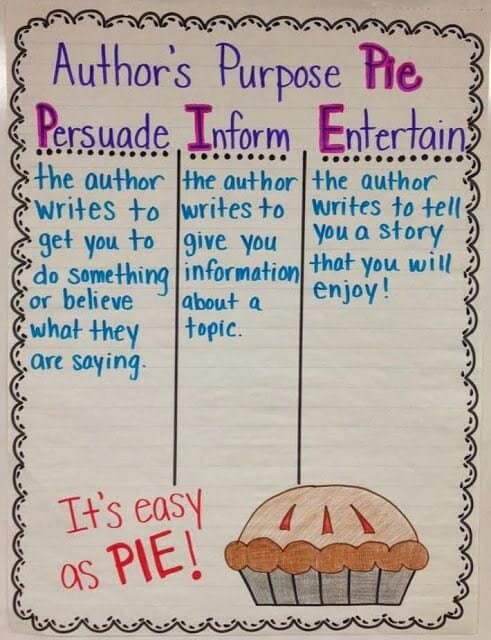
The Author’s Purpose Task 1. The Author’s Purpose Anchor Chart
Whether introducing the general idea of the author’s purpose or working on identifying the specifics of a single purpose, a pie author’s purpose anchor chart can be an excellent resource for students when working independently. Compiling the anchor chart collaboratively with the students can be an effective way for them to reconstruct and reinforce their learning.
The Author’s Purpose Task 2. Gather Real-Life Examples
Challenging students to identify and collect real-life examples of the various types of writing as homework can be a great way to get some hands-on practice. Encourage your students to gather various forms of text together indiscriminately. They then sift through them to categorize them appropriately according to their purpose. The students will soon begin to see that all writing has a purpose. You may also like to make a classroom display of the gathered texts to serve as examples.
The Author’s Purpose Task 3. DIY
One of the most effective ways for students to recognize the authorial intent behind a piece of writing is to gain experience producing writing for various purposes. Design writing tasks with this in mind. For example, if you are focused on writing to persuade, you could challenge the students to produce a script for a radio advertisement. If the focus is entertaining, you could ask the students to write a funny story.
The Author’s Purpose Task 4. Classroom Discussion
When teaching author’s purpose, organize the students into small discussion groups of, say, 4 to 5. Provide each group with copies of sample texts written for various purposes. Students should have some time to read through the texts by themselves. They then work to identify the author’s purpose, making notes as they go. Students can discuss their findings as a group.
Remember: the various purposes are not mutually exclusive; sometimes, a text has more than one purpose. It is possible to be both entertaining and informative, for example. It is essential students recognize this fact. A careful selection of texts can ensure the students can discover this for themselves.
In Summary
Students need to understand that regardless of the text they are engaged with, every piece of writing has some purpose behind it. It’s important that they work towards recognizing the various features of different types of writing that reveal to the reader just what that purpose is.
Initially, the process of learning to identify the different types of writing and their purposes will require conscious focus on the part of the student. Plenty of opportunities should be created to allow this necessary classroom practice.
However, this practice doesn’t have to be exclusively in the form of discrete lessons on the author’s purpose. Simply asking students what they think the author’s purpose is when reading any text in any context can be a great way to get the ‘reps’ in quickly and frequently.
Eventually, students will begin to recognize the author’s purpose quickly and unconsciously in the writing of others.
Ultimately, this improved comprehension of writing, in general, will benefit students in their own independent writing.
This video is an excellent introductory guide for students looking for a simple visual breakdown of the author’s purpose and how it can impact their approach to writing and assessment.


